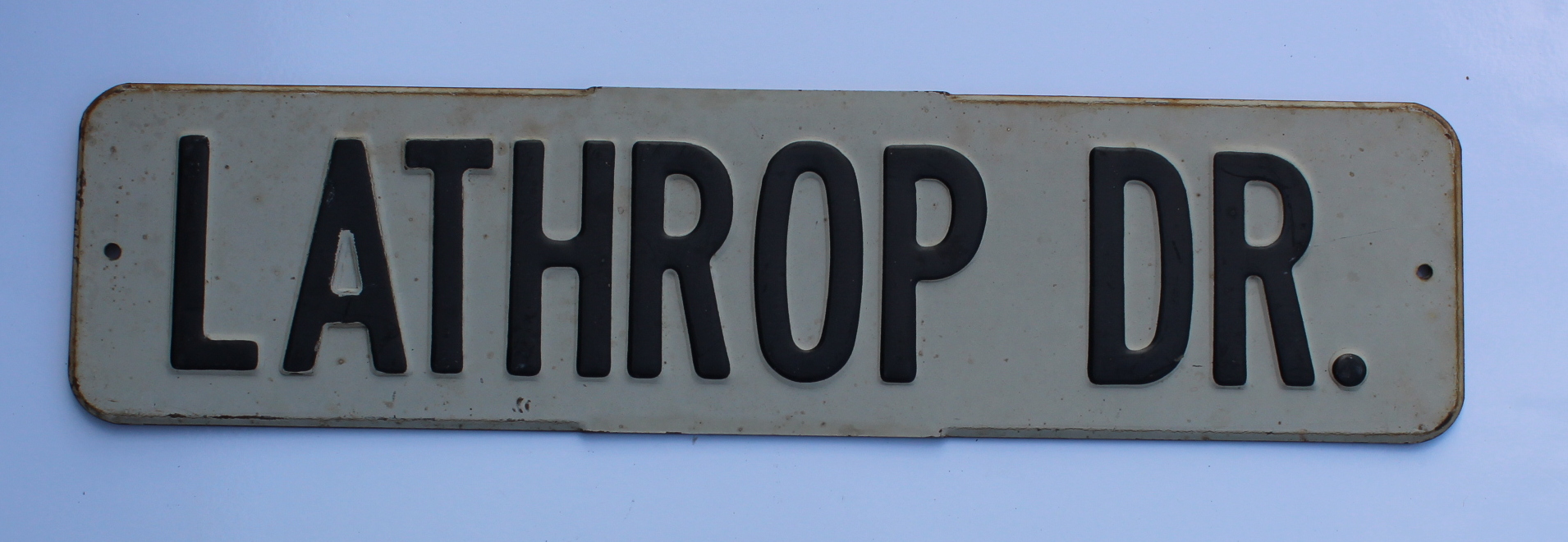Stanford University Street Names
22nd May 2020
We just acquired a lot of old Stanford street signs and became interested in the origin of many of the names. Stanford's campus took its street names from a variety of sources including early Spanish and Mexican explorers of California, places affiliated with the Gold Rush and from Spanish names.
An invaluable resource in our research was the 2005 work produced by Richard W. Cottle's in 2005 and published by the university called: Stanford Street Names.

Palo Road took its name from the Spanish for "stick." It is not far from the famous redwood tree, El Palo Alto, that inspired the name of Leland Stanford's Palo Alto Farm, and later, of the city of Palo Alto.

Lathrop Drive in the Pine Hill residential area, honors university co-founder Jane Lathrop Stanford, Leland Stanford's wife, and her brothers.
Many of the street names were given by David Starr Jordan, the founding president of Stanford, who was fond of naming streets after missionaries. Lasuen Street commemorates Father Fermin Francisco de Lasuen, who left Spain in 1759 and served at various Franciscan missions in Mexico.

Raimundo Way refers to Rancho Canada de Raymundo, a large Mexican land grant situated in today's San Mateo County.

One of the main roads on campus, Serra Street, was named for Father Junipero Serra, the Franciscan missionary and founder of the first nine missions in Alta California. The name was chosen by David Starr Jordan, Stanford's first president because he was impressed by Serra's passion, energy, and vision.

Some of the interesting geographic names were based on associations with the Gold Rush, namely Panama Street and Valparaiso. Panama Street first appeared in Stanford maps around 1915, a year after the Panama Canal opened. The name highlights the important role play by the Isthmus of Panama in the history of Gold Rush California as a popular shortcut bypassing Cape Horn.

Valparaiso was one of the original streets in the first residential area on campus. It was named for the seaport in Chile by the same name through which many gold rush hopefuls passes en route to California.

The dramatic main entrance road to the campus, Palm Drive, was originally named as a continuation of Palo Alto's University Avenue. The street was lined with palm trees in 1893 at President Jordan's suggestion. Frederick Law Olmsted, who designed the Stanford campus, positioned the road in the university plans in 1888 as "an avenue to a proposed railway station." In 1901, Leland Stanford's wife Jane forbade automobiles on campus, reserving Palm Drive for carriages, bicycles, and pedestrians. By 1914 the trustees lifted the car ban and in 1994 the road was completely rebuilt and the granite curbs called for in Olmsted's original plan were finally added.

Please check out our Stanford items for sale, which include a nice selection of these rare, original street signs.